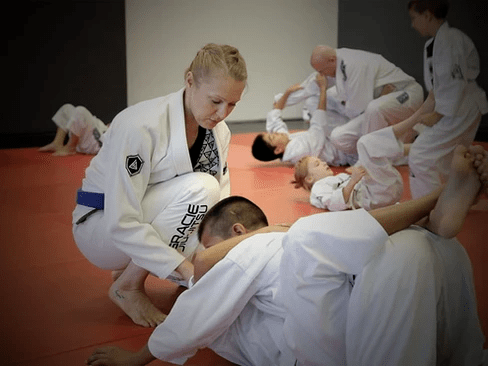What to Expect When You’re Getting Braces
Between the ages of 6 and 13, most children will have their adult ‘permanent’ teeth emerge (although wisdom teeth will appear later). During this time, abnormal bites, irregularities, and malocclusions will become apparent, and some kids/families will need to start considering if they should get orthodontic care that would probably include braces. Other people wait until they are adults to begin orthodontic treatment. Currently, around four million people of all ages throughout the United States and Canada wear braces for straightening their teeth, aligning their bite, or otherwise improving their smile.

No matter the age, it’s normal for any patient to be a little nervous when they know they’ll be getting braces. If it isn’t clear what to expect, this anxiety can be unnecessarily compounded. With a little preparation and a good thorough consultation with an informative and understanding orthodontist, any fears should be easily allayed.
What exactly is going to happen?
The pre-braces appointment:
We will start the process by seeing you at a complimentary orthodontic consultation, during which images and x-rays of your teeth and mouth may be taken. If your child already visits us for dental care, then we will be able to use their existing records and images as well. If we need plaster molds, and they haven’t already been recently done, the impressions for those would probably be taken during this appointment as well. We will take our time and answer any questions you may have at this appointment.
Our team will collect as much information from your child and family as we can, in order to develop the most comprehensive analysis possible. This allows us to tailor the treatment plan to support your family’s goals, financial needs, and lifestyle.
From there, we can decide together what might work best for you or your child from what we offer, whether it’s traditional braces with self-ligating brackets, clear braces with self-ligating brackets, or clear aligners.
Approximately a week prior to having the braces put on, we might put spacers in between the rear molars if needed, which provides extra room for bands to be placed around the molars later. If these happen to fall out, we should be notified right away.
The day braces go on:
The day when braces actually go on will start with a teeth cleaning to make sure the surfaces of the teeth are clean, dry, smooth, and ready for the brackets to be attached. Please be sure to brush and floss your teeth very well before you arrive to make this go faster and smoother! Once the cleaning is complete, we will begin putting the braces on, which normally takes around 90-120 minutes.
To begin, brackets are attached to the teeth using a special orthodontic adhesive, after which the adhesive will be “cured”, using a specific type of light. Then, a wire is drawn through, connecting the brackets. Brackets can be placed on the outside of the teeth or inside, depending on the patient’s needs and preferences. Brackets can either be the traditional metal color or clear (tooth-colored).
Then, depending upon the type of braces being used, the patient may have a clip applied to hold the wire to the teeth, as is done with self-ligating braces, or rubber bands called ligatures may be used instead. Ligatures come in many colors, and can be a fun way of personalizing braces.
This appointment will also include instructions on how to floss, brush, eat, and drink with braces on. In general, people who just got braces should stick with soft foods that require no (or hardly any) chewing for at least a few days after getting their braces on as they grow accustomed to how their mouth feels. Cold puddings, ice cream, mashed potatoes, yogurt, hummus, cottage cheese, smoothies, soup, applesauce, oatmeal, scrambled eggs, fish, soft-cooked vegetables, soft fruits like bananas, macaroni and cheese, and similar soft foods are good options. We also have many more helpful recommendations on eating with braces here.
Additionally, people should avoid hard, sticky, or very chewy foods for the entire time they wear their braces and should plan on swishing water around in their mouths after drinking sugary beverages whenever a toothbrush is not around. Foods to definitely avoid include chewing gum, popcorn, taffy, caramel apples, nuts, hard candy, and ice cubes. A water flosser and orthodontic flossers would also be a wise investment.
Add-ons:
We may also provide small elastic rubber bands to stretch from the upper to lower jaws in order to apply additional pressure and move the teeth more quickly. Headgear, an orthodontic device that attaches to tubes mounted on the braces and also applies further corrective pressure to the teeth, which is normally worn only at night, may be necessary as well. Other orthodontic devices may also be used. Of course, we will provide any additional information that you need to use the devices correctly.
Will it hurt?
Once the braces are in place, you or your child probably will not feel any soreness at first, but the pressure of the teeth being gently moved into their proper position may become noticeable within a few hours. Then, continuing on into the first few days of having braces, patients might experience soreness in general, especially when attempting to eat, and may feel sore or chafed areas inside the mouth where the new brackets are.
We will provide a special type of wax for you to use to cover any uncomfortable or ‘sharp’-feeling parts of the braces or brackets. You may also use over-the-counter pain medications like acetaminophen (Tylenol) if needed. If your child received the braces, be sure to use the proper type and dosage for their age. You can find many more strategies to minimize discomfort here. The patient’s mouth and teeth will adjust over time (usually within a few days) and eventually should only feel sore temporarily when the braces are once again tightened.
How long will it take?
As mentioned before, this appointment will usually take 1.5 to 2 hours. Generally speaking, wearing the braces themselves from beginning to removal takes about 1 to 3 years. It may be less for certain people or for children receiving early orthodontic intervention. After removal, the patient may receive and continue wearing a retainer for any amount of time deemed necessary to maintain the final results.
Conclusion
Here at Jungle Roots, we take a conservative approach to orthodontic care, personalizing the treatment of all our patients to suit their specific needs. When you bring anyone in your family to us, you can be sure their best interests are at the heart of what we’ll do here, and your concerns as a parent or family member are always of the greatest importance to us. Feel free to make an appointment or call us anytime about your child’s (or your!) braces, what to expect, advice on a challenge you may be having, or any other questions we can answer for you. We are looking forward to talking with you again soon and seeing the beautiful results of your braces!

At Jungle Roots Children’s Dentistry & Orthodontics, we strive to provide the highest comprehensive pediatric and orthodontic dental care in a unique, fun-filled environment staffed by a team of caring, energetic professionals. We believe the establishment of a “dental home” at an early age is the key to a lifetime of positive visits to the dentist.


















